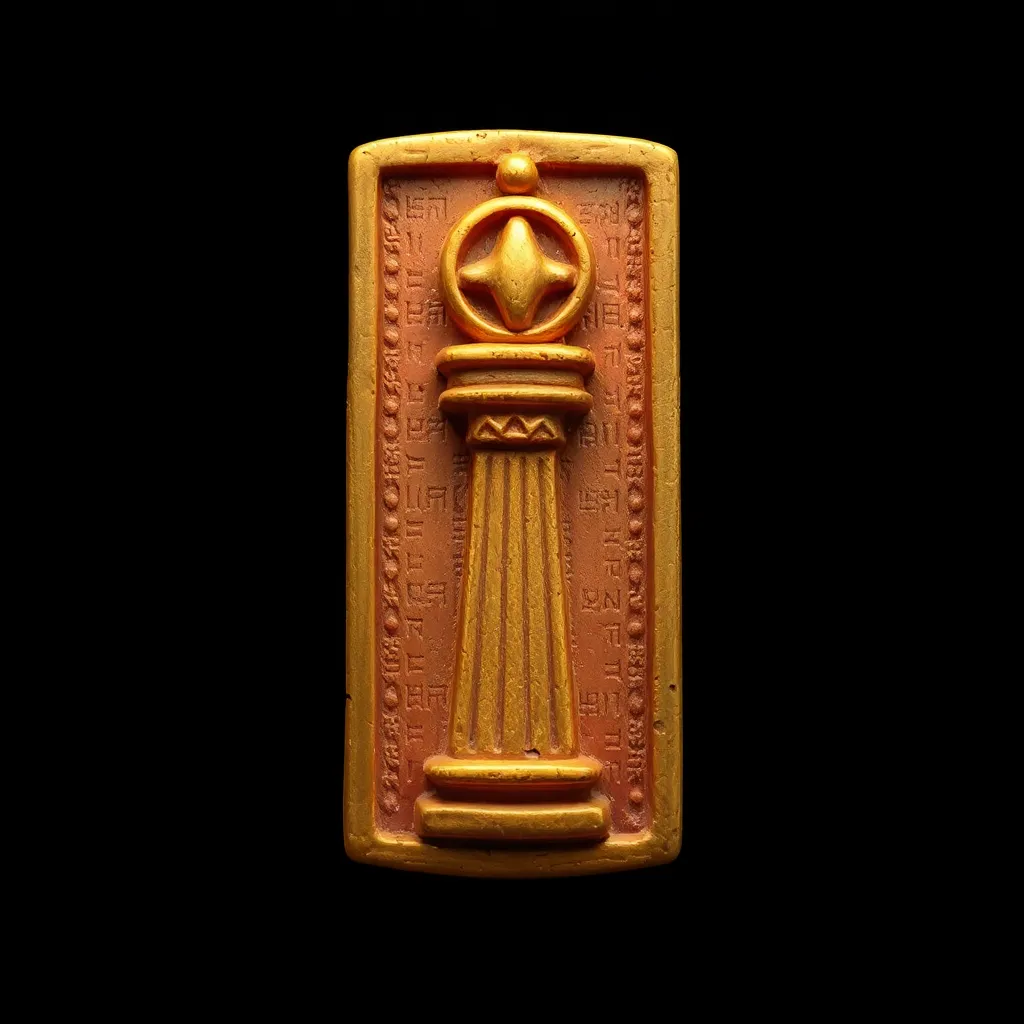The Symbolism of the Djed Pillar in Amulet Form
I. Introduction
The Djed Pillar is one of the most recognizable symbols in ancient Egyptian mythology, often associated with stability, strength, and resurrection. Its unique design, resembling a stylized pillar with a broad base and a series of horizontal lines, has captured the imagination of historians and enthusiasts alike. Amulets, on the other hand, played a significant role in ancient Egyptian culture, serving as protective charms and symbols of divine favor. This article delves into the rich symbolism of the Djed Pillar, particularly in its amulet form, exploring its historical context, significance, and modern interpretations.
II. Historical Context of the Djed Pillar
The origins of the Djed symbol can be traced back to the early dynastic periods of ancient Egypt. Initially, it represented the backbone of Osiris, the god of the afterlife, and symbolized his resurrection. Over time, the Djed became associated with the concept of stability and endurance, reflecting the societal values of ancient Egyptians.
- Origins and Evolution: The Djed symbol likely evolved from early totemic representations, gaining prominence in religious texts and tomb decorations.
- Connection to Osiris: As a symbol of Osiris, the Djed embodies the principles of life, death, and rebirth, central tenets in ancient Egyptian mythology.
- Cultural Significance: The Djed symbol was widely revered and often featured in temples, tombs, and various artifacts, indicating its importance in ancient Egyptian society.
III. The Djed Pillar as a Symbol of Stability
The Djed Pillar is often interpreted as a representation of stability and endurance, qualities that were highly valued in ancient Egyptian culture.
- Interpretation: The structure of the Djed, with its broad base and rising form, symbolizes a strong foundation and the endurance of life through adversity.
- Funerary Practices: In funerary contexts, the Djed was believed to provide stability to the deceased in the afterlife, ensuring safe passage and a prosperous existence beyond death.
- Agricultural Connection: The Djed’s link to the Nile and its seasonal flooding made it a symbol of agricultural fertility, reinforcing its role in sustaining life in ancient Egypt.
IV. The Djed Pillar in Amulet Form
The Djed amulet has an iconic design that has been preserved throughout the ages, crafted with both artistry and spiritual significance.
- Description: The Djed amulet typically features a vertical pillar with a series of horizontal lines at the top, representing the stability and strength it symbolizes.
- Materials: Djed amulets were crafted from various materials, including stone, metal, and faience, with each material holding its own significance.
- Variations: Across different periods, the design of Djed amulets varied slightly, reflecting changes in artistic styles and cultural practices.
V. Protective Qualities of the Djed Amulet
The Djed amulet was believed to possess potent protective qualities, making it a popular choice among ancient Egyptians for various purposes.
- Protective Powers: Many ancient Egyptians believed that wearing a Djed amulet would provide protection against misfortune and malevolent forces.
- Burial Practices: Djed amulets were commonly placed in tombs to safeguard the deceased in their journey to the afterlife.
- Daily Life: Beyond burial contexts, the Djed amulet served as a personal talisman, believed to bring stability and security in everyday life.
VI. The Djed Pillar in Art and Iconography
The Djed symbol has been widely depicted in ancient Egyptian art and architecture, showcasing its importance in the culture.
- Artistic Depictions: The Djed is commonly found in paintings and carvings on temple walls and tombs, often depicted in scenes related to resurrection and the afterlife.
- Temple Architecture: Many temples incorporated the Djed symbol into their structures, symbolizing the divine stability and eternal nature of the gods.
- Modern Interpretations: Today, the Djed continues to inspire artists and designers, appearing in contemporary art and popular culture.
VII. Modern Relevance and Interpretations
In recent years, there has been a revival of interest in ancient symbols like the Djed, particularly in contemporary spirituality and fashion.
- Contemporary Spirituality: Many people today seek to connect with ancient symbols for their spiritual significance, viewing the Djed as a representation of resilience and strength.
- Fashion and Jewelry: The Djed symbol has found its way into modern jewelry designs, appealing to those who appreciate its historical meaning and aesthetic appeal.
- Resilience Symbol: In a world that often challenges our stability, the Djed serves as a powerful reminder of enduring strength and the capacity to overcome obstacles.
VIII. Conclusion
The Djed Pillar holds profound significance in both ancient Egyptian culture and contemporary society. Its representation of stability, strength, and protection resonates across time, making it a powerful symbol for many. As we reflect on the enduring legacy of the Djed, it is clear that its symbolism continues to inspire and empower individuals today. The Djed amulet, with its rich history and protective qualities, serves as a bridge connecting ancient beliefs with modern interpretations, reminding us of the timeless quest for stability and resilience in our lives.




